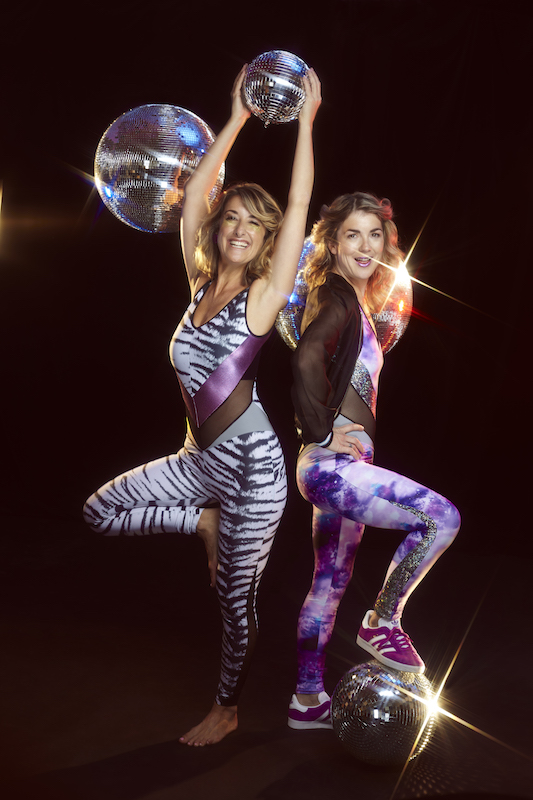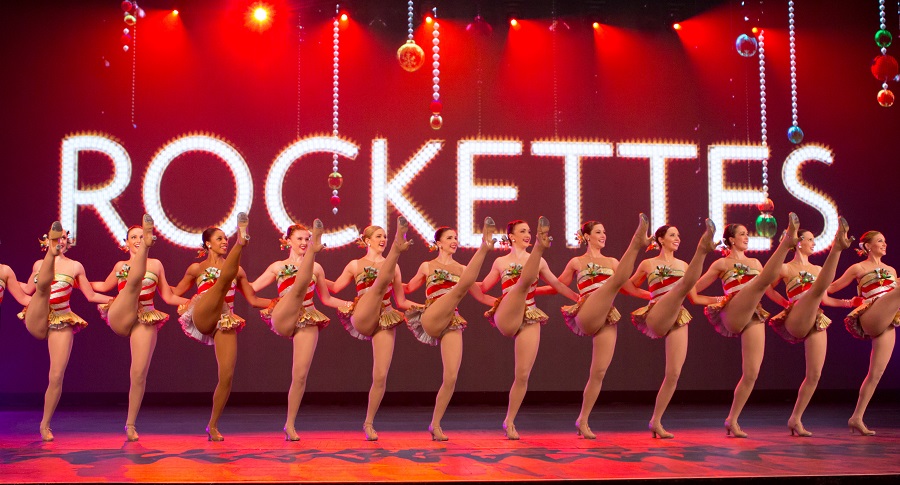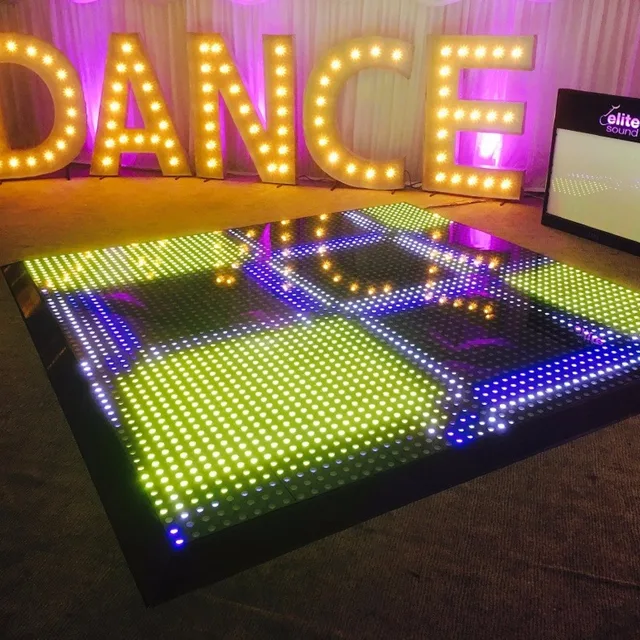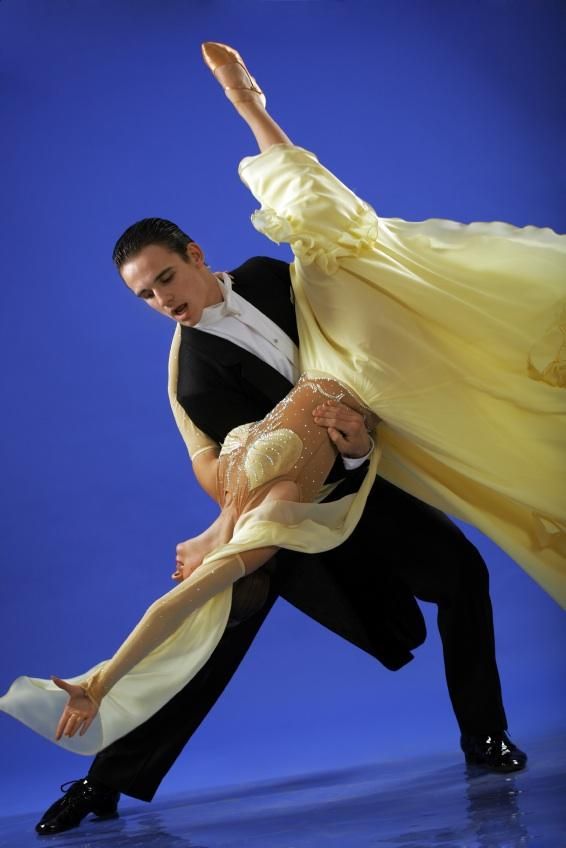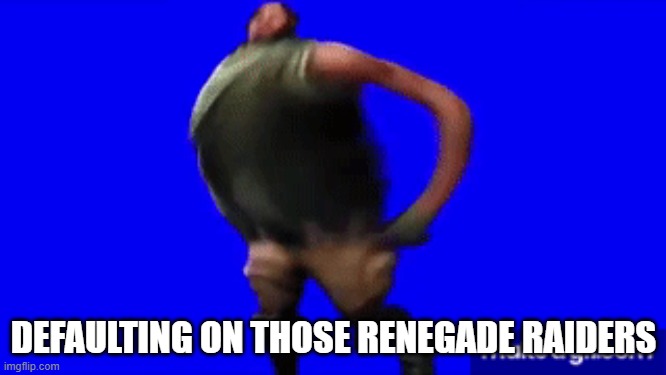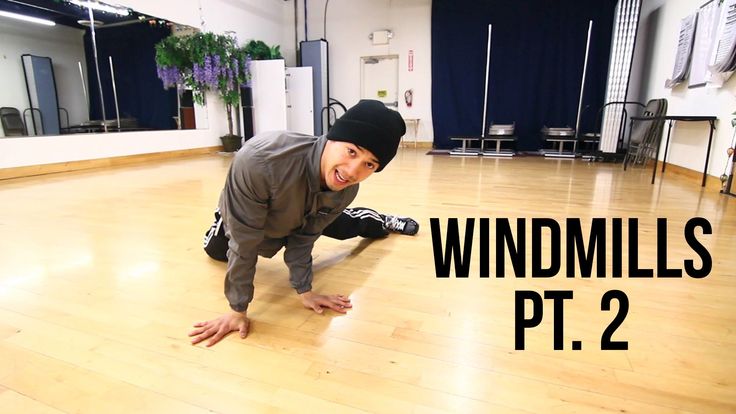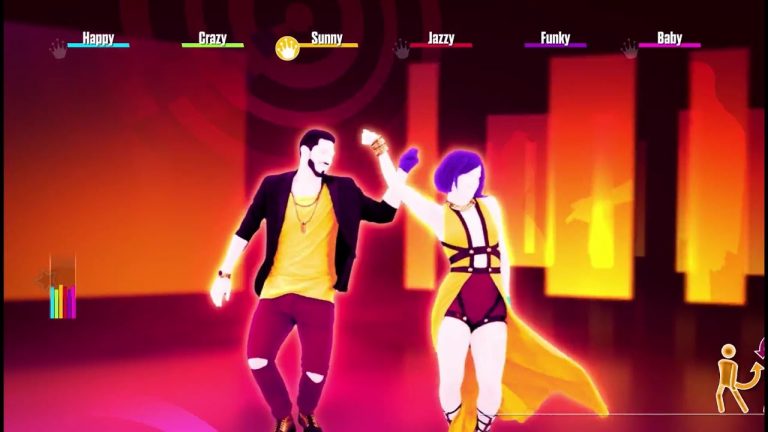How to disco dance moves
13 Simple Disco Dance Moves for Beginners
Many people consider disco to be a relic of the 70s and 80s, but it’s still alive and well in this day and age. In fact, disco dance and music have recently undergone a revival. People now became taken once more by the energy of disco dance moves.
If you’re one of many who just recently discovered the magic of this dance and would like to take a shot at it, this guide can help get you started. Whether you’re practicing by yourself at home or with an instructor, try out one of these basic disco moves. They’ll give you a solid foundation and will give you the opportunity to try more advanced techniques later on.
Of course, after learning a couple of tricks, you can confidently perform on the dance floor, as well!
Contents
- 13 Common Disco Dance Moves for Beginners
- 1. The Disco Finger
- 2. Double Arm Swing
- 3. The Bus Stop
- 4. The Snap
- 5. The Elbow Pull
- 6.
The Bump
- 7. The Get Down
- 8. The YMCA
- 9. The Retro Hustle
- 10. The Funky Chicken
- 11. The Butterfly
- 12. The Back Catch
- 13. The Electric Slide
- Final Words
13 Common Disco Dance Moves for Beginners
1. The Disco Finger
Source: Bostonherald.comThis is an incredibly iconic move. Daresay, it’s the signature dance move for disco after being popularized by John Travolta and Saturday Night Fever.
The Disco Finger doesn’t use a lot of the body from the knees down. Instead, the focus is on the hips and one hand. Extend your index finger (of any hand). Then, move your hand upward and downward in a diagonal movement. As you do, thrust your hip from side to side.
It’s a fairly simple move. So, at most, you’d be able to nail down the pattern in an hour or two of practicing in front of the mirror.
2. Double Arm Swing
Another iconic move in the disco world.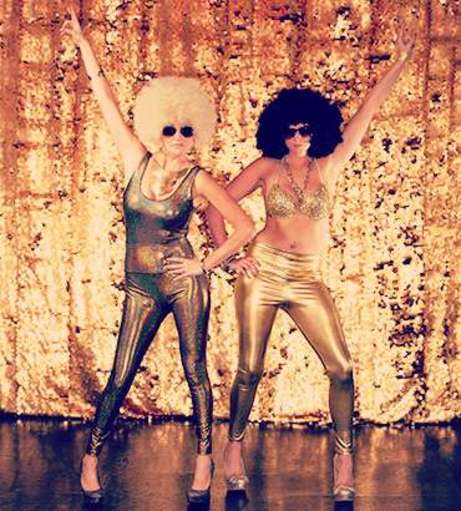 Though it is simple, the move is fun to do and can display a lot of energy and openness on your part.
Though it is simple, the move is fun to do and can display a lot of energy and openness on your part.
There are two counts to the Double Arm Swing. The starting position is a quarter turn to your left side with your left foot.
- On the first count, thrust out your chest and throw your right arm forward and into the air. At the same time, swing your left arm backward.
- The second count is bending your knee and dropping your hip as you swing your right arm downward and to your back. Swing your left arm forward and upward.
Repeat to the beat of the music or as fast as you can, depending on your mood.
3. The Bus Stop
Like other moves in disco, the Bus Stop is simple, yet fun. Typically, it is performed on the backing of Are You Ready? (Do The Bus Stop). But really, you can use it on any fast-tempo disco song.
Compared to the Disco Finger or the Double Arm Swing, the pattern is a bit more complicated. With a bit of practice, it’ll become natural in no time.
- Start up with both of your feet together. Loosen up your knees a little bit. Don’t lock up, or you’re going to look very robotic.
- Take a step back with your right foot, then take an even farther step back with your left foot.
- The moment your left foot hits the floor, take a step back with your right foot again.
- Now it’s time to move forward! Bring your left foot forward, then follow it up with your right.
- Take another step with your left foot.
- Bring your right foot alongside your left foot and give it a small tap, stopping the walking motion. Clap your hands in time with the foot tap.
- Take a step to the left using your left foot. Follow it up with a step right behind the left foot with your right foot.
 Repeat this pattern three times.
Repeat this pattern three times. - Once again tap your left foot with your right foot, then clap your hands.
- Now reverse the pattern. Take a step to the right with your right foot, then bring your left foot behind the right foot. Repeat three times.
- Tap your right foot with your left foot and clap your hands.
- Make a quarter turn to either your left or right, and start again from the top.
It’s a pretty long-winded pattern, but take your time and practice. You’ll be able to get the hang of it a few hours in.
4. The Snap
The Snap, also known as the “Hip Check”, emphasizes the movement of the hips area. If you’re looking for a sensual move that can show off your body as well as your nimbleness, it’s a good one to try.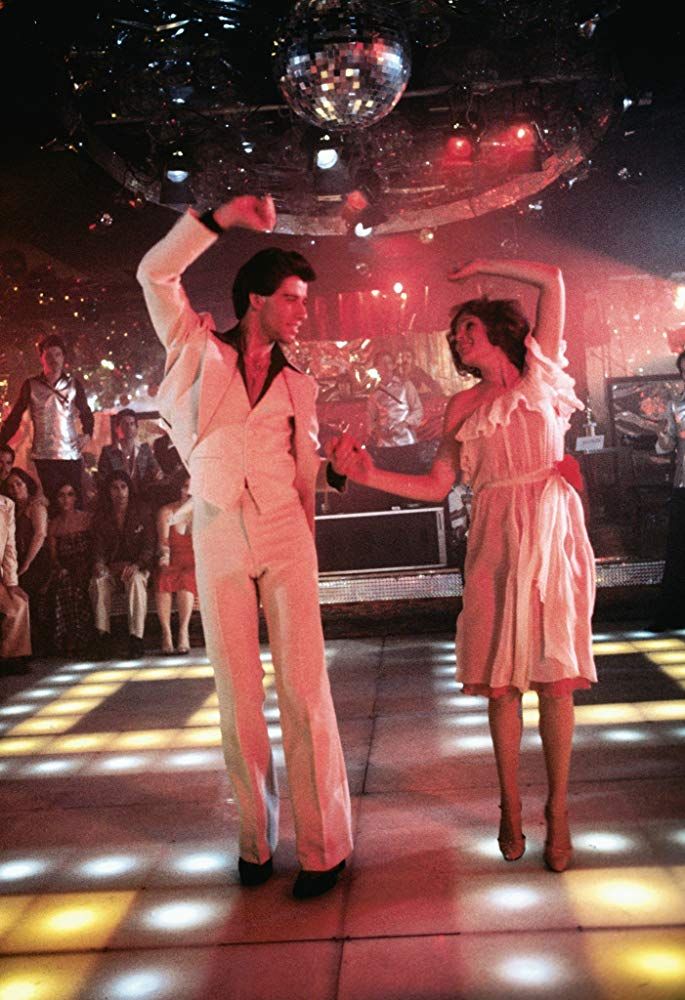
- Start with your feet being in-line with your hips.
- Shift your hips to the right, then snap your fingers using your right hand.
- Now, hips to the left, bend your knees, and immediately swing your right hips to the right.
- Straighten up your legs and swing your hips to the left again.
Repeat the pattern from the beginning and keep it going to the rhythm of the music.
Do note that the Snap is a very fast-paced move, which can make it pretty challenging to master at the beginning if you practice at full speed. Instead, we recommend going slow at first. Practice at half the normal tempo and gradually speed it up when you become more familiar with the pattern.
5. The Elbow Pull
This is one of the more difficult moves in disco for beginners as it requires some coordination. If you’ve had experience with dancing before, you probably would be able to nail the Elbow Pull in an hour. For those who don’t, you’ll need a few hours to get into the rhythm.
If you’ve had experience with dancing before, you probably would be able to nail the Elbow Pull in an hour. For those who don’t, you’ll need a few hours to get into the rhythm.
- Start up with your feet apart. Your arms should be skewing slightly to the right. Ball up your hands into fists.
- Swing your hips right and follow it up by bringing your left foot to the right, as well. Draw your left elbow up and to the back until your forearm is perpendicular to your shoulder.
- Next, swing your hips to the left and follow that up by stepping your right foot to the right. Punch forward in a line across your chest with your left arm (note that you shouldn’t punch too hard, else you could get tendonitis when practicing or dancing for long periods). Keep your forearm perpendicular to your shoulder.
- Swing your hips to the right and bring your left foot to the right. Pull your elbow backward, but unlike before, keep your forearm low and perpendicular to your hips instead of your shoulder.
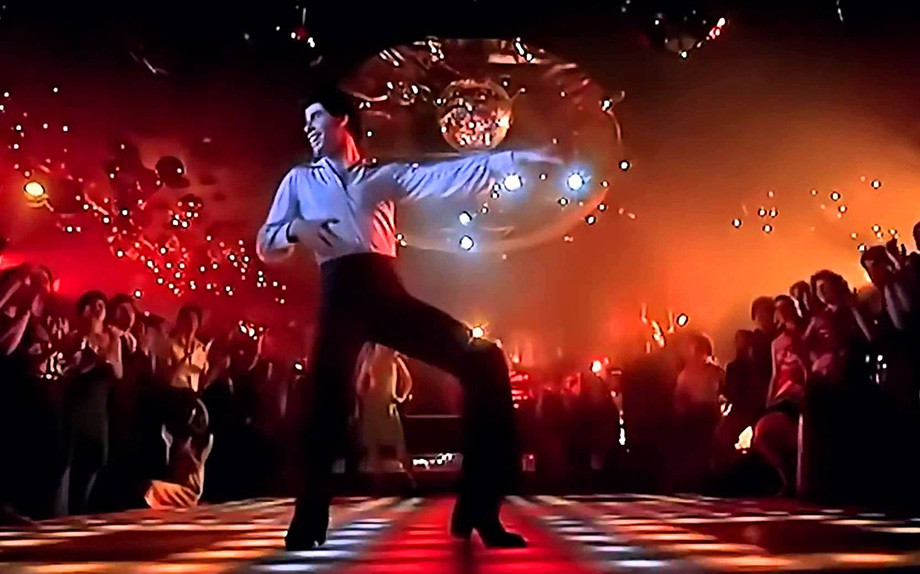
Repeat the pattern to the beat of the music (or as fast as you can!)
The arm tends to be the most difficult part of this move. Most people will feel a bit awkward at first while practicing the arm motion. So, we suggest that you start first with the arm. Once you get used to the pulling-punching motion, then add in the hips and the legs.
6. The Bump
To learn and perform the Bump, you’ll need the help of a partner. It’s pretty easy and fun to do (especially when you do it with someone you’re romantically interested in, but it can also be done with a friend).
Dance freestyle however you wish on the dance or practice floor. Then, when it’s time to pull this Move (signal your partner), swing one side of your hip towards your partner and bump it with theirs.
Quickly swing your body to the opposite direction and bump the other side of your hips with your partner. Repeat!
Repeat!
Your partner should also mirror your movement and, ideally, you two should be bumping your hips together in tandem and to the beat.
7. The Get Down
The Get Down traces its roots back to African dances. This move requires you to keep your legs wide apart. Then, bend at the waist area and knees to get down as close as possible to the floor.
8. The YMCA
Everyone’s probably heard of the YMCA by The Village People before. And if you do, you most likely already know this classic dance, as well.
It’s so popular that it’s not just done in the disco circles these days. It has long since evolved into an Internet meme, so you can see people busting it out at various popular events like school dances and sporting events.
Of course, this dance is best done on top of the YMCA song.
The dance itself is pretty simple.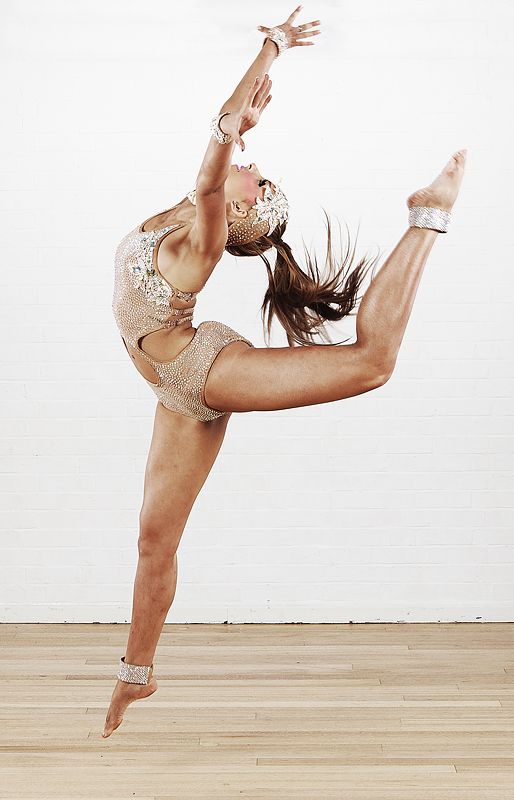 You just have to move your arms and twist your body to spell the letter “Y”, “M”, “C”, “A” with your figure.
You just have to move your arms and twist your body to spell the letter “Y”, “M”, “C”, “A” with your figure.
Although it’s not exactly required, whenever people come together to recreate this dance, they always scream the lyrics at the top of their lungs. So, we suggest that you do the same, as well, when you get the opportunity! It’s a lot more fun that way.
9. The Retro Hustle
This is one of the most famous disco dance moves from the 70’s.
The rise of the Hustle began with the chart-topping song “The Hustle” by Van McCoy and the Soul City Symphony in 1975. Because of its massive popularity, the Hustle has had many different variations since 1975. As a result, the original version is often referred to as the “Retro Hustle” to distinguish it from newer versions.
It’s a simple sequence of movements that includes taking three steps forward and three steps backward. In the process, you’d also be doing extra movements like pointing your finger skyward and weaving your fists together in circles.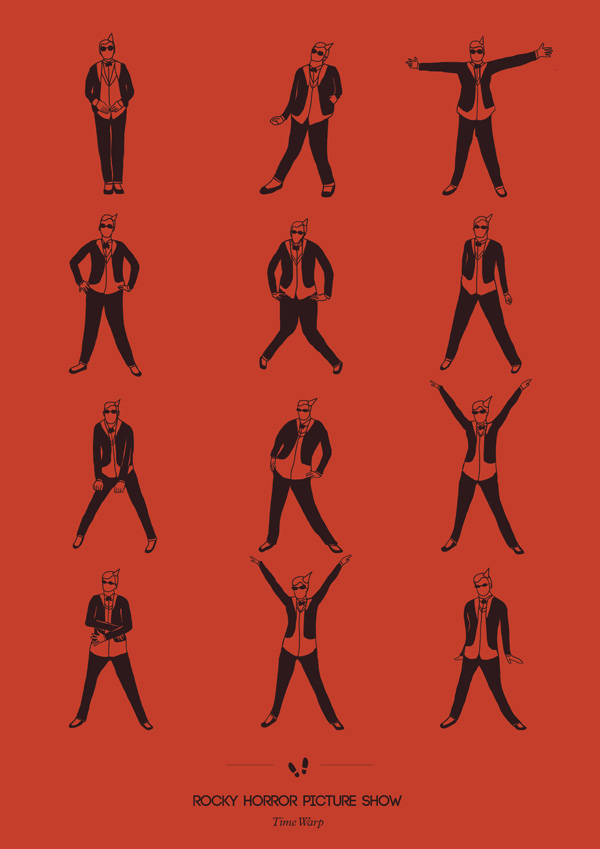
Some people think it looks a bit silly … but just like everything in disco, the point is maximum fun value. Plus, since the move is done on an 8-beat count, it can actually fit just about any disco song on the catalog!
10. The Funky Chicken
The Funky Chicken is better known by its other name: the Chicken Dance.
As far as being silly, this is probably among the silliest moves in disco. However, at a party or on the dance floor with other people or with friends, it’s extremely fun.
- Rest your arms on either side of your chest and ball up your hands into fists. Your elbows should be tucked to the lower side of your ribs.
- Shake your head forward and backward for 4 or 8 counts.
- Imitate a chicken’s wings by pushing your elbows outward while keeping your hands close to your chest.
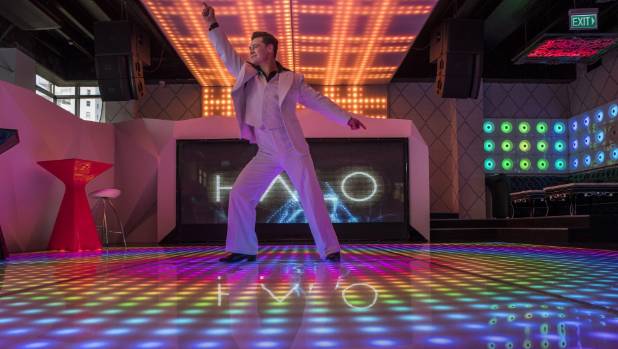 Then, draw them back in again (just imagine a chicken flapping its wings).
Then, draw them back in again (just imagine a chicken flapping its wings). - Repeat this to the beat of the music or as quickly as possible!
To make the move look better, you can add some lower body movements to it. When you bring your elbows up, bend one of your knees and swing your foot out. That would rotate your hip.
When you bring your elbow back in again, switch out the foot.
11. The Butterfly
For this move, you need a partner.
Grab both of their hands with yours and grip tight (but not too tight!).
Then, walk around one another to the beat of the music. Depending on your mood, you can steer both of you in a clockwise or counterclockwise motion.
12. The Back Catch
Since this move will require some flexibility on your part, do a quick warm-up first before you try it.
- Stand on your right leg, then kick your left leg as far back as you can.
- As you kick your left leg, bring both of your arms backward and try to reach for your foot as it goes up.
 If your back is bendy enough, you may even be able to grab onto your foot. But don’t feel bad if you can’t, grabbing the foot isn’t really required.
If your back is bendy enough, you may even be able to grab onto your foot. But don’t feel bad if you can’t, grabbing the foot isn’t really required.
The move would make you look like a ballet dancer on the stage!
13. The Electric Slide
The Electric Slide is popularized by the song “Electric Boogie” by Marcia Griffiths and Bunny Wailer.
- To do this move, start off by doing a grapevine.
- Take a step to the right with your right foot.
- Follow that up by taking a step to the right with your left foot by moving it behind your right foot. Your legs should be crossed here.
- Step right with your right foot again and your legs will be uncrossed.
- Put your feet back close together. Tap your left foot to the side of your right foot.

Repeat the grapevine but to the left instead of the right.
Finished?
- Now step three steps back with your right foot. Tap your left foot next to your right foot after you finish the third step back.
- Step forward with your left foot after the tap. Then, swing your right foot behind you and tap your right foot’s toe against the ground.
- Step back onto your right foot after your toe struck the ground.
- Bring your left foot forward again and tap it in front of your right foot.
Once your left foot hits the ground, immediately pivots to the left by 90°. To make it more aesthetically pleasing, you can kick your right foot up and brush the ground with your heel as you pivot in place.
Repeat the steps until the music ends!
Final Words
Disco is often seen by people nowadays as “old people” dance. But that’s entirely untrue! Head to a club with some friends and use up all these disco dance moves.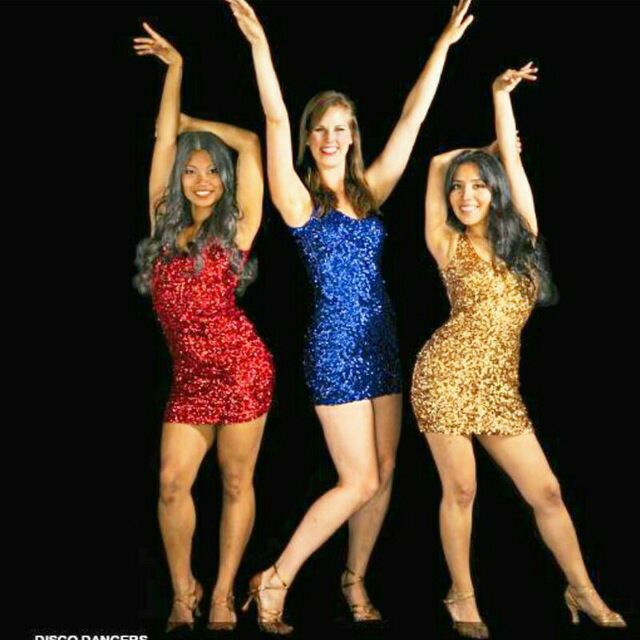 You’ll be able to see for yourself just how fun this dance can be!
You’ll be able to see for yourself just how fun this dance can be!
Quirky Disco Dance Moves to Pump Up the Party
Although one would say disco dance and music have fleeted away, disco dance moves continue to be the most fun moves performed in clubs and parties all across the world. If you’re going to one such party, or having a 70s’ blast, you might want to take a look at some of the classic moves explained in this DancePoise article.
Top Disco Songs of All Time
♪ Le Freak ~ C’est Chic
♪ You should be dancing ~ Children of the World
♪ Hot Stuff ~ Bad Girls
♪ Disco Inferno ~ Disco Inferno (The Trammps)
♪ I will survive ~ Love Tracks
Disco music was originated by African-Americans somewhere in the 1970s. Eventually, the music along with its unique dance form, called disco dancing, became extremely popular amongst various cultures. This new music and dancing style took many urban centers all around the world by storm in the mid-1970s. Especially, with the release of movie ‘Saturday Night Fever’ in 1977 starring John Travolta, disco dancing reached new heights of popularization and fan following.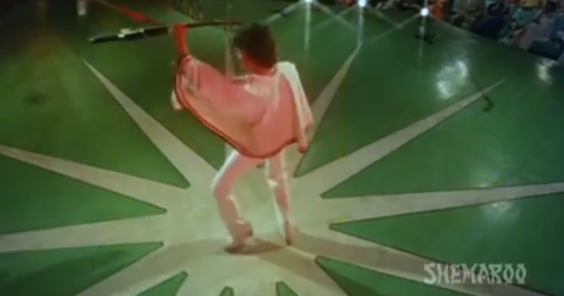
Disco dancing came in a variety of formats, like partner dancing, line dancing, and even solo dancing. Its moves were highly choreographed and dictated by deejay-driven beats, which later became more athletic and stunt-driven. But with the upcoming of other dance forms like hip-hop dance, break dance, etc., its popularity eventually faded away. However, disco dance has always been a fun dance and so is enjoyed by people of all age groups.
Disco Dance Styles
Disco dancing can be performed either partnered or solo, also called freestyle. Solo moves generally vary from one person to another, as per the body type, prior dance experience, or the dancing environment. One such example of solo dance is back catch, where the dancer stands on one leg, and kicks the other leg up and back, meanwhile reaching their arms over the head as if trying to catch their foot behind them. Splits, jumps, spins, kicks, and cross-kicks are some other freestyle or solo moves. Partnered moves are performed either between couples or groups, depending upon the learned patterns. Electric slide or Clarence Carter’s ‘Strokin’ are large pattern-based line dances, which are some of the most enduring disco dance moves.
Electric slide or Clarence Carter’s ‘Strokin’ are large pattern-based line dances, which are some of the most enduring disco dance moves.
Step-by-step Instructions for Classic Disco Dance Moves
The Point Move, a.k.a. Travolta
It is one of the most common disco steps, which involves the upward and downward movement of the hand, with the index finger pointing out, along with alternating hip movements.
Step 1: Right hand (index finger) top
For this move, your feet should be shoulder-length apart, hips pointing left and your right hand with index finger pointing out, lifted up to the right.
Step 2: Right hand down (diagonal movement)
Then pull the right hand down across the body towards the left with your hips moving to the right. Do this step without moving your feet, with your body weight on your left foot, swaying your right hand finger diagonally across, towards the floor. Allow your hips to naturally wiggle. The move can also be performed using both hands, right and left, with respect to the alternate hip movements.
The Hustle Move
Step 1: Forward and Back
✦ Start with the relaxed position―hands at the side, feet together. We’ll take 4 steps backward, starting with your right, then left, then right, and then left stopping with feet parallel to each other (taking a single step per beat).
✦ Now we go reverse. Take 4 steps forward, starting with your left foot this time. We’ll end up being in same position where we started off.
Step 2: Three-step Turn and Clap
✦ This is a three-step combination in the right and left direction. Take medium-sized steps, and we start by moving right with your toe pointing outwards as if you’re about to turn.
✦ Bring your left foot across, and complete the turn (your body facing to the rear).
✦ We complete the part three of this move by clapping hands towards your right (since we started off from right).
✦ Do the same move, but this time starting with your left foot.
GIST: R – L – R … turn … clap!
L – R – L … turn … clap!
Step 3: Point Step
We do the ‘point’ move here, 4 diagonal swings on 8 counts.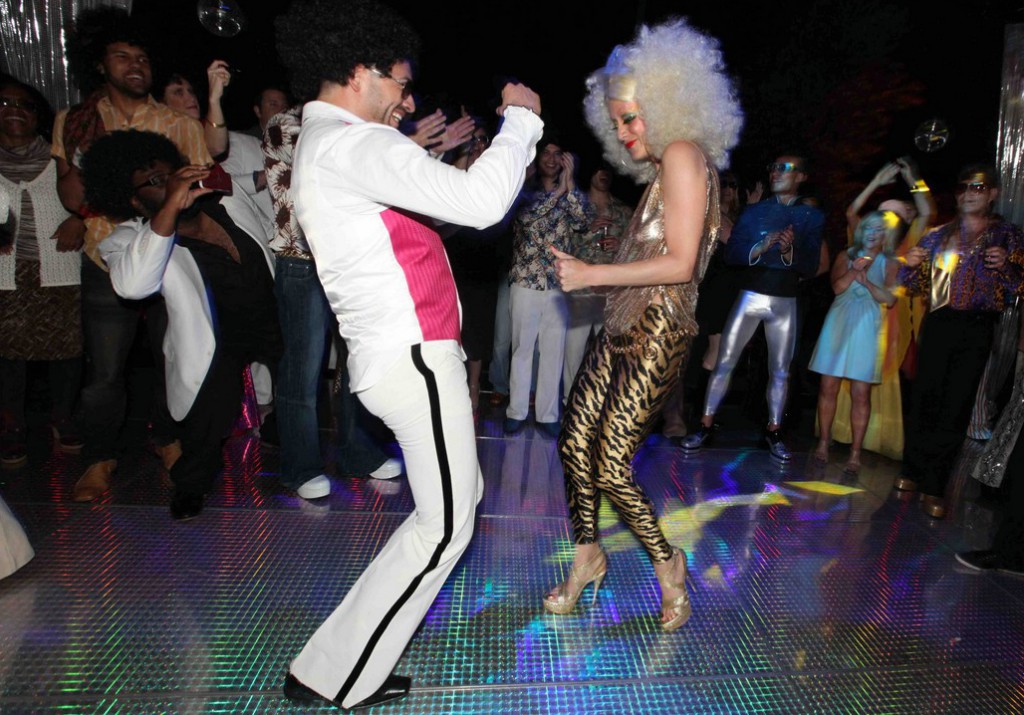
Step 4: Roll and Chicken
✦ Next, with the last step in the Travolta sequence, we continue by doing back-and-forth-weight shift, by keeping forearms parallel to the floor and rotating them as if you’re rolling. We do this step for 2 beats―once with right and then with left.
✦ From the third beat, we go into chest isolation move, in which you push out your sternum (naturally taking shoulders backs), and hands moving down to the sides. Do this for 2 beats, one on either side.
Step 5: Right-Foot Quarter Turn
✦ Put your right foot forward with no weight on it.
✦ Now, take a step back with the same foot.
✦ Step out to the side.
✦ Take a quarter turn to the left in a way that you’re 90 degrees to your original position in a counterclockwise direction.
✦ Starting from the position you’re standing in, continue doing the entire sequence, right from step 1 of this move.
The Electric Slide Move
Step 1: Movement in Right and Movement in Left
Initiate the move by doing a grapevine, i. e., take four steps to the right and touch the left foot next to the right foot and clap on the last step. Likewise, do a grapevine to the left and touch your right foot while ending it with a clap.
e., take four steps to the right and touch the left foot next to the right foot and clap on the last step. Likewise, do a grapevine to the left and touch your right foot while ending it with a clap.
Step 2: Backward Movement
Now, take four steps back and step on the right, then left, then right, and tap your left foot and clap at the end.
Step 3: Smack – Kick – Stand
Balance the weight on the left foot. Take a smack-kick in front with your right, turning a quarter angle, and step the foot on floor standing on a new side.
The Electric Slide sequence ends here. As this is a line-dance, it calls for repeating the entire sequence again and again. Continue doing steps 1 to 3 from your current position.
You can infuse variations by doing hand movements, wiggling your hips, etc. After all, dance is all about expressing your emotion (which can involve forgetting rules ;-)) and having fun.
Disco style moves. Encyclopedia of Dance: Disco
Rhythmic music, dance floor lights, energetic plastique and acrobatic dance elements. It's all 80s disco. This is a dance that will give you an incredible charge of vivacity and positive, make your body elastic and strong, give you new sensations and never make you bored.
It's all 80s disco. This is a dance that will give you an incredible charge of vivacity and positive, make your body elastic and strong, give you new sensations and never make you bored.
How did the disco style appear?
The history of the disco style begins in France in the 60s of the last century, where young people in discos began to dance not to the live music of the orchestra, as before, but to songs recorded on records. Soon such discos spread throughout Europe, and after the film "Saturday Night Fever", released at 19In 1977, disco dancing became wildly popular.
Today, the disco style is also very popular among young people, and many learn disco in dance schools. You can list for a long time the styles that this active and groovy dance has absorbed. These are jazz, aerobics, acrobatics, Latin American dances, classical elements, rock and roll, rhythmic gymnastics and many other areas, which together form an amazing mix called disco.
80s Disco Features
Disco dance is based on a special rhythm (about 120 beats per minute). Disco steps are springy, and the movements have not changed much since the beginning of this direction. Disco of the 80s is a very active dance, it is even classified as a sports dance. Its execution requires good physical preparation, because it is far from being as easy as it seems to perform acrobatic steps so that the pulse does not go off scale. Therefore, in order to learn how to dance disco perfectly, you need to practice a lot.
Disco steps are springy, and the movements have not changed much since the beginning of this direction. Disco of the 80s is a very active dance, it is even classified as a sports dance. Its execution requires good physical preparation, because it is far from being as easy as it seems to perform acrobatic steps so that the pulse does not go off scale. Therefore, in order to learn how to dance disco perfectly, you need to practice a lot.
For hard work and faith in yourself, you will be rewarded with admiring glances and excellent physical shape. Believe me, nothing can compare with the ability to literally flutter around the stage, conveying the most powerful energy of the dance to the audience and making their hearts flutter with delight. Disco dance will help you show yourself and others what your body is capable of, discover new facets of the vision of music and dance performance. Even if you do not plan to seriously engage in this dance direction, training in any case will bring a lot of benefits, both for your body and for your internal state, developing endurance, grace, coordination, help you lose weight, relieve stress and recharge with positive.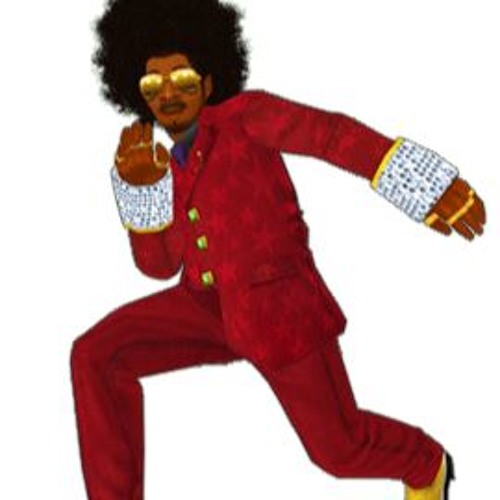
Disco dancing - training in CITYDANCE
After you have learned what disco dance really is, don't you want to try your hand at this interesting and exciting direction? For those who are not afraid to discover a new life, our teachers lead disco groups at the CITYDANCE dance school. Under the guidance of experienced teachers, you will master the basic movements and learn to feel the rhythm. But the main thing is to learn to feel the music with your heart and enjoy the dance, because this is the main thing.
What is the best way to come to class?
In training, active physical training and stretching awaits you, so you need to choose clothes that stretch well and fit comfortably. From shoes, light sneakers, Czech shoes or ballet flats are best suited.
Disco is a bright holiday that plunges you into a state of sweet love. A dance that gives a feeling of freedom and breaks away from everyday routine
The dance and music style of disco is perhaps the most popular trend in pop culture of the last century. The history of this genre begins around the mid-70s simultaneously in the US and Europe. The American disco style has absorbed the traditions and sound of funk and soul. The European direction of disco inherited the characteristic tendencies of traditional pop music and intertwined with new trends in pop music.
The history of this genre begins around the mid-70s simultaneously in the US and Europe. The American disco style has absorbed the traditions and sound of funk and soul. The European direction of disco inherited the characteristic tendencies of traditional pop music and intertwined with new trends in pop music.
The history of disco
1974 is considered to be the year of birth of the new clockwork dance. This significant event happened in the clubs of New York, and a few years later the whole of America was covered by a real disco boom. Almost simultaneously, disco, moving across the ocean, conquered Europe, and later the Soviet Union. In the USSR, a new dance penetrated from two sides at once - from the west from America and from the east from India, where the film "Disco Dancer" was filmed, which gained extraordinary popularity in the Soviet Union.
In 1977, the film "Saturday Night Fever" with John Travolta in the title role is released in the USA.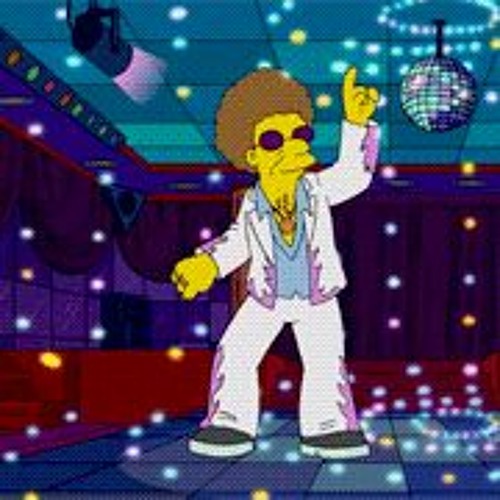 This picture clearly shows the life of a real disco fan, who on the dance floor forgot about all life's troubles and hardships.
This picture clearly shows the life of a real disco fan, who on the dance floor forgot about all life's troubles and hardships.
At the origins of the European style of disco were the groups "Abba" and "Boney M", which had perhaps the greatest fame in the history of pop music. Producers and composers contributed to the spread and popularization of the new style.
The heyday of the style falls on the eighties of the last century. He has not lost relevance even now. Every year in Russia, the Disco 80s festival is held, to which domestic and foreign stars are invited.
What is disco?
The roots of the disco style can be traced back to the funk and soul movements that absorbed the Negro music and dance culture. The main features of disco are "live" and electronic processing of music and a fast pace, from 120 beats per minute, which is twice the human heart rate.
The enchanting popularity of disco lies in the simplicity of basic movements, the absence of strict rules and requirements, and the possibility of improvisation. In disco, you can show your individuality, demonstrate your own original movements, show your skills. The dance is performed in discos in large companies.
In disco, you can show your individuality, demonstrate your own original movements, show your skills. The dance is performed in discos in large companies.
Discotheques of the 80's featured twinkling effects, mirrored walls and mirrored spinning balls, flashing lights, strobe lights. All this environment contributed to the growth of the popularity of disco and its entry into fashion.
Types of disco
The most popular types of disco are:
- Mellow disco - slow, lyrical disco, tempo 95-110 beats per minute.
- Hustle is an American form of disco. This is a pair dance that can be danced in discos with any partner, to any music, in any, even the smallest, space. Over time, the hustle absorbed movements from many Latin American dances and stood out as an independent style.
- Eurodisco is a disco style common in Europe and the USSR. In turn, eurodisco is divided into subspecies, the most popular of which are Hi-NRG and ItaloDisco.
 C.Catch, Samantha Fox, Kylie Minogue, Sabrina, Sandra, Modern Talking, Pet Shop Boys, Bad Boys Blue and others were prominent representatives of Eurodisco that gained worldwide popularity.
C.Catch, Samantha Fox, Kylie Minogue, Sabrina, Sandra, Modern Talking, Pet Shop Boys, Bad Boys Blue and others were prominent representatives of Eurodisco that gained worldwide popularity.
Disco style is popular and loved even now. Not only representatives of the older generation, who "lit up" at the discos in the eighties, during the peak of the popularity of disco, but also young people listen and dance disco with pleasure.
At the height of fashion throughout Europe. Join us, become the king or queen of any party! Our teachers will help make your dream a reality!
Club and modern dance training programs include popular dance styles:
Individual lessons are also available.
“I want to dance or learn to dance club dances” - such desires were visited at least once by absolutely every person. However, in many cases, they remained just desires. And the thing is that saying “I want to learn to dance” and getting a professional dance education are completely different things.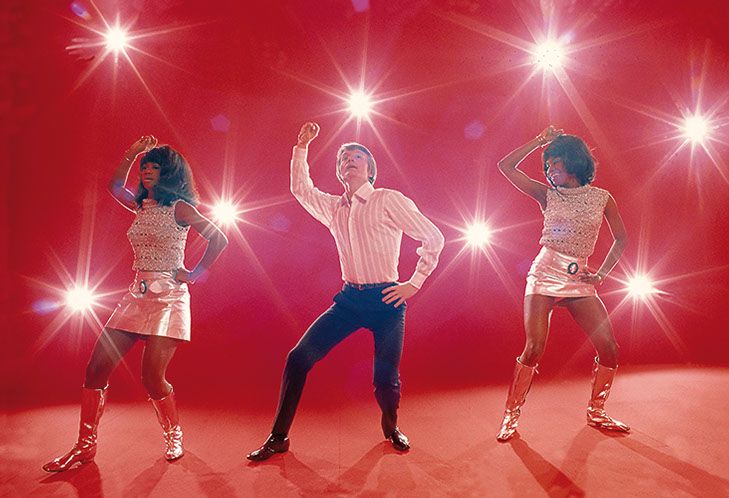 One wish is not enough. You still need to make great efforts to really, for example, learn how to dance break dance, salsa, latin, hustle, hip hop, break dance and other dances. It's no secret that you can learn to dance only at a professional hip hop dance school. Only a good and professional school can provide the basis that will make a real experienced dancer out of an amateur. If you need professional dance training and your desire “I want to learn to dance” has grown into something more, our experienced teachers are ready to provide you with any qualified assistance.
One wish is not enough. You still need to make great efforts to really, for example, learn how to dance break dance, salsa, latin, hustle, hip hop, break dance and other dances. It's no secret that you can learn to dance only at a professional hip hop dance school. Only a good and professional school can provide the basis that will make a real experienced dancer out of an amateur. If you need professional dance training and your desire “I want to learn to dance” has grown into something more, our experienced teachers are ready to provide you with any qualified assistance.
— LEARNING TO DANCE TOGETHER WITH THE “NEW PROJECT” IS SIMPLE AND FUN!
Our Moscow hustle dance school or any other club and sports dance school offers you to quickly master any dance style that is very popular all over the world today. First of all, the Moscow dance school “New Project” differs from other similar institutions in that we employ professional teachers with many years of experience.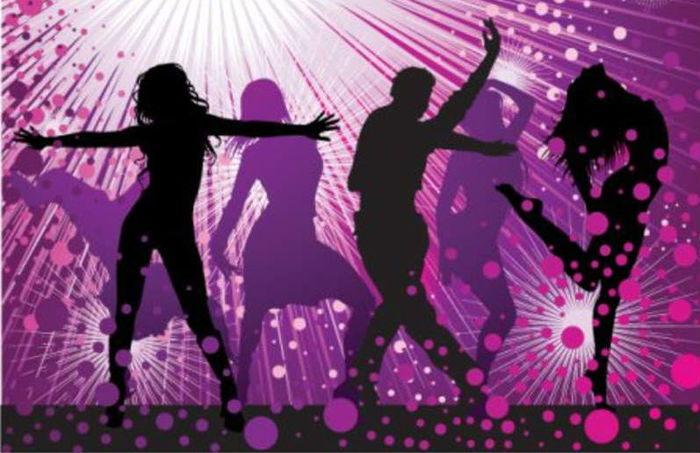 Plus, our Moscow dance school practices an individual approach to each student.
Plus, our Moscow dance school practices an individual approach to each student.
Turning to our school, you can quickly and at a high professional level learn to dance club dances, which are taught in the dance studio "New Project". The main thing is that back dance, salsa, latin, hustle, hip hop, break dance or any other club or sports dance with our dance school is, firstly, quite simple, and, secondly, exciting, informative, interesting and, most importantly, useful!
POPULAR DANCE DIRECTIONS TEACHED IN THE “NEW PROJECT”:
Our professional hustle and hip hop dance school and other club dance schools have been operating for several years now. Learning these dances together with our experienced teachers, you will not only master all the tricks of these or other dances, but over time you will be able to show your best side at any party where they dance or even at the performance of professional dancers. We teach in our schools, studios and halls:
- Disco (Disco) - one of the main genres of dance music of the XX century, originated in the early 1970s.
 In the mid-80s, the disco genre becomes very popular, especially in Europe, which led to the emergence of such a genre as EuroDisco. New electronic instruments appear and new styles of dance music emerge, the main ones being Hi-NRG and ItaloDisco. In the 90s, even more new directions were formed, finally replacing the old disco. These are, first of all, such dances as EuroDance, TechnoDance, ItaloDance and ItaloHouse.
In the mid-80s, the disco genre becomes very popular, especially in Europe, which led to the emergence of such a genre as EuroDisco. New electronic instruments appear and new styles of dance music emerge, the main ones being Hi-NRG and ItaloDisco. In the 90s, even more new directions were formed, finally replacing the old disco. These are, first of all, such dances as EuroDance, TechnoDance, ItaloDance and ItaloHouse. - Hustle (from the English hustle "hustle, hustle") - pair dance, based on the leading and improvisation of the dancers. It is quite popular among club dances and dances to disco music popular at 1980s like disco fox, disco swing and hustle itself. Dances such as hustle are basically extremely simple, danced for four counts (disco-fox for three), does not require a long study and allows anyone who, after a little training and practical training at the dance school, the New Project hustle to dance it on any events and parties.
- Hip hop (Hip-hop) is a youth dance direction that appeared in the mid-1970s among African Americans and Latinos and has now actively conquered the entire modern world.
 In our dance studio "New Project" - the study of this direction is based on such dance styles as Breakdance, Crump, C-Walk, waving.
In our dance studio "New Project" - the study of this direction is based on such dance styles as Breakdance, Crump, C-Walk, waving. - Salsa (Salsa), Mambo (Mamba), Jive (jive) - a dance of African-American origin that appeared in the 70 - 80 years in the Puerto Rican and Cuban communities of Central and South America.
Perhaps you have already watched some dance training course or even managed to master some simple club dance moves somewhere. However, no video course or simple visual learning and repetition can teach you how to master this dance genre as skillfully as a professional teacher. Therefore, if what you have seen, practiced before, repeated after someone, or the dance technique that you own at the moment does not suit you for a long time, feel free to sign up in our studio. "New Project" is a school of hip hop, hustle and other club and sports dances, we will teach you all the nuances of incendiary dances that combine inspiration and passion.
CLUB STUDIO “NEW PROJECT” HOLDS THEME PARTIES AND DISCOS WHERE CLUB DANCES ARE DANCED!
Dance Club-Studio "New Project" - a school for hustle, hip hop, etc. , not only makes dreams come true by conducting training sessions in any dance types and directions. In our club “New Project”, a night disco “Incognito” is held, where you can show off your skills and practice dancing. We constantly hold and organize various themed dance parties that bring to the life of our students and guests a special sophistication, the novelty of the performance of modern and classical dance movements.
, not only makes dreams come true by conducting training sessions in any dance types and directions. In our club “New Project”, a night disco “Incognito” is held, where you can show off your skills and practice dancing. We constantly hold and organize various themed dance parties that bring to the life of our students and guests a special sophistication, the novelty of the performance of modern and classical dance movements.
WITH A “NEW PROJECT” THE WISH “I WANT TO LEARN TO DANCE” TURNS INTO REALITY!
Looking at what unimaginable somersaults perform hip-hop performers or how plastic dancers move in the disco style, and mambo and hustle make the body involuntarily move to the rhythms of incendiary music, each viewer will definitely have the following desire - “I want to learn how to dance”. True, the mere desire “I want to learn how to dance hip-hop, hustle or salsa”, as in the case of other dances, is not enough. Accordingly, in order for the desire “I want to learn to dance” to become a reality, you need to undergo professional training from experienced teachers.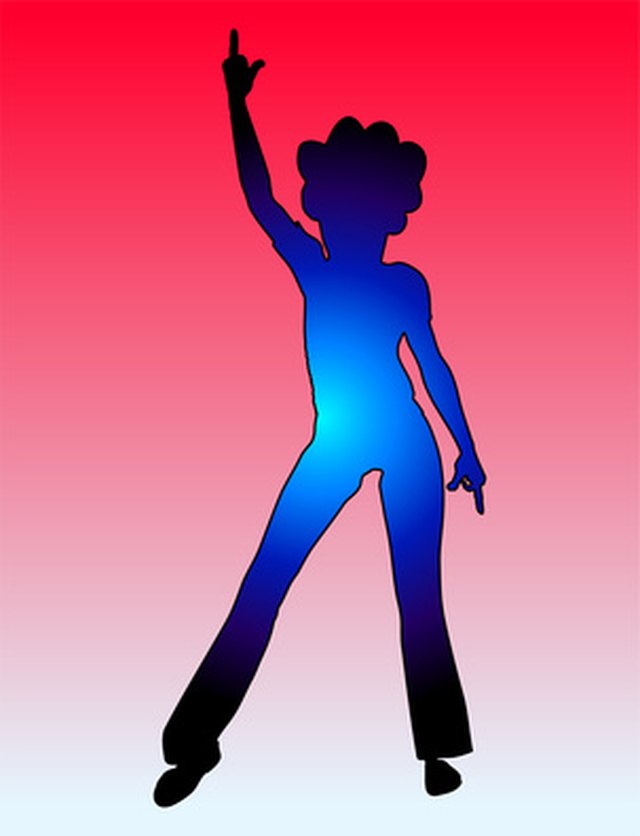
If you have long been interested in the question of how to learn to dance hip-hop, the teachers of the “New Project” (school of hustle dance, hip hop, etc.) will always be happy to help you answer it. Moreover, the answer to the question of how to learn to dance any dance from the direction of club dances, our teachers can give in the most accessible form for the student. After a certain time has passed after the start of training in the “New Project”, the question of how to learn to dance will never again be an unsolvable mystery for you.
Disco is a dance direction invented in the 70s of the last century. In those years, disco was the number one dance that everyone could dance. Today, the fashion for this dynamic and vibrant dance is back again. Themed parties that are held in nightclubs are especially popular.
Basic disco moves
If you don't have the time or desire to go to a dance school, you can learn disco on your own using video lessons. Before you begin to perform the movements, prepare yourself a room.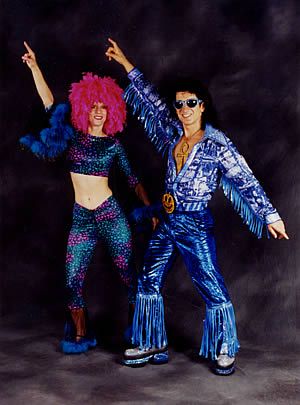 Remove all unnecessary items. Disco is a very energetic dance that includes sweeping arms and legs. Music for disco dance should be fast, with a pronounced tempo. Listen to a piece of music, get used to its rhythm and tempo.
Remove all unnecessary items. Disco is a very energetic dance that includes sweeping arms and legs. Music for disco dance should be fast, with a pronounced tempo. Listen to a piece of music, get used to its rhythm and tempo.
The choreographic disco pattern is quite simple. Start with the first basic element of disco - stand up straight, bend your legs slightly at the knees, bend your arms at the elbows and press them to the body. Begin to intensively bend and unbend your legs, springing, swaying your whole body to the musical beat. After a couple of such movements, begin to make movements with your hands. First, unbend one arm at a time, and then do these movements simultaneously with both arms.
Move your feet, stepping back with each foot in turn. Swing constantly. Perform the same movements to the side now with your hands.
Turns and twists
After mastering the basic movements, gradually complicate the elements of the dance. Cross one leg over the other and turn.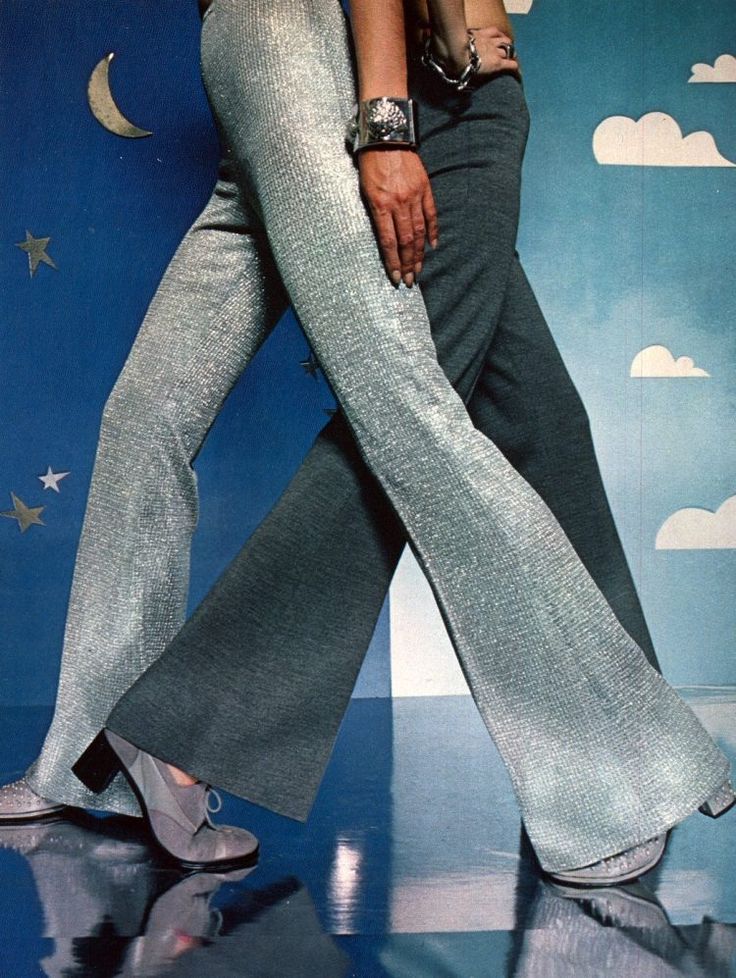 Straighten your knees and try to roll on your toes around you. This element of the dance must be supplemented with the movements of the hands, which are sharply and quickly straightened above the head. When these elements are learned and the body gets used to the pace, the rest of the various movements will follow by themselves. Watch disco dancing videos, remember everything you have seen in various films. Try to repeat these movements.
Straighten your knees and try to roll on your toes around you. This element of the dance must be supplemented with the movements of the hands, which are sharply and quickly straightened above the head. When these elements are learned and the body gets used to the pace, the rest of the various movements will follow by themselves. Watch disco dancing videos, remember everything you have seen in various films. Try to repeat these movements.
Disco dance elements can be very diverse, fast and energetic.
Before exercising in disco, do a little warm-up, as too vigorous movements can damage the ligaments and muscles. Disco is a slightly comical, bright and slightly ridiculous dance. Don't forget about disco paraphernalia - puffy wigs, flared pants, bright sequined suits and, of course, makeup.
Oriental dances are quite an unusual and bewitching spectacle. In addition, they, like other physical activities, benefit human health. During this type of dance, the spinal muscles are involved, as well as the waist and arms, in the abdomen and pelvis it increases .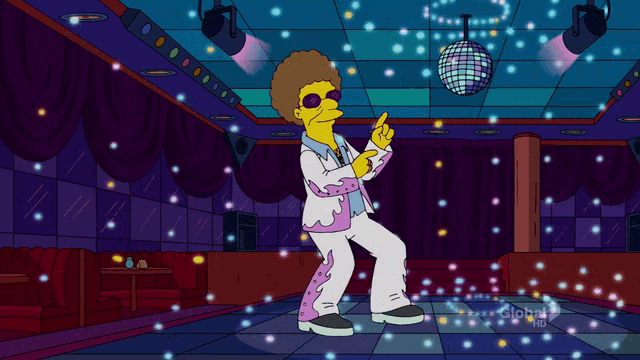 ..
..
Jumpstyle is a youth dance with Belgian roots. Being a relatively new direction, it needs specific music. In order to learn how to perform this dance, you should know its essence. It is danced by creating a kind of chain, the links of which are the legs ...
Break Dance is a very beautiful and dynamic dance that has a lot of sub-styles. The most interesting thing is to watch the dancers who, during the performance, combine movements from the upper and lower breaks, as well as from other sub-styles. Each b-boy through training and experimentation...
How to dance in a disco for a girl
Do you know how to dance in a disco for a girl to look beautiful and not get obscene offers? There are many ways to have fun in a club, and if your only plan is to dance, then they should be in the right mood. This does not mean that you need to hide in a corner and step from foot to foot, head down on the floor.
How not to dance at a disco for a girl
If your task is not provocation, you do not need to pay much attention to movements with waves in the area of the hips and buttocks. At an ordinary disco, twerk or booty dance will look not like a dance, but like self-promotion, and in a not very good context. Moreover, you should not demonstrate your abilities in backbends and shaking your booty on your girlfriends. From the outside it looks like an unambiguous invitation to join. Moreover, this is how dance is understood not only by the person for whom you started the performance, but by the whole disco. And some completely outsider can “attach” you in a completely rude manner.
At an ordinary disco, twerk or booty dance will look not like a dance, but like self-promotion, and in a not very good context. Moreover, you should not demonstrate your abilities in backbends and shaking your booty on your girlfriends. From the outside it looks like an unambiguous invitation to join. Moreover, this is how dance is understood not only by the person for whom you started the performance, but by the whole disco. And some completely outsider can “attach” you in a completely rude manner.
How to dance a girl at a disco in POP style
Most often, girls prefer just such discotheques, as they put on their favorite music, to which you can not only dance, but also sing along to yourself or even out loud. This helps to relax and not feel like an outsider in a crowd of strangers.
Zigzag movement
The simplest movement suitable for a POP disco is the zigzag. You don't even have to train hard to do it. The highest point of the zigzag is the hips. We choose the side from which we start the movement, for example, the left leg. Mentally draw the sign "Zorro" in the air, and now try to repeat it with your hips. To make it look nice, and not like a Sunday school squat, do it not on two legs, but with a change in the leading leg, depending on the change of side where you “sent the hips”. Those. we start with the left leg, shift the weight of the body to the right leg, making the movement of the hips from left to right, while slightly bending the right leg. Further from this position (without unbending the right leg), we move the hips from the right to the left, bending the left knee stronger than the right, and the last time to the right, everything is the same. From this position, we straighten the left leg and “drag” the hips behind it. Experiment with this movement by drawing a zigzag with your hips in different ways.
Mentally draw the sign "Zorro" in the air, and now try to repeat it with your hips. To make it look nice, and not like a Sunday school squat, do it not on two legs, but with a change in the leading leg, depending on the change of side where you “sent the hips”. Those. we start with the left leg, shift the weight of the body to the right leg, making the movement of the hips from left to right, while slightly bending the right leg. Further from this position (without unbending the right leg), we move the hips from the right to the left, bending the left knee stronger than the right, and the last time to the right, everything is the same. From this position, we straighten the left leg and “drag” the hips behind it. Experiment with this movement by drawing a zigzag with your hips in different ways.
Movement “my hairstyle”
This movement is performed by almost all girls at dancing parties, sometimes without even thinking, just repeating after someone. "My hairstyle" will look completely different for the hostesses of different haircuts. Owners of long curls usually collect hair in both palms and hold them while performing some kind of movement, then release them. Girls with short haircuts mannerly run their hands through their hair, tousling them, or run their hands through their hair, leaving their palms in the area of \u200b\u200bthe temples or forehead. Stand near the mirror and try to play with your hair, remember which look suits you the most, do the same during the dance, only without a mirror and choosing only the previously practiced hand poses.
Owners of long curls usually collect hair in both palms and hold them while performing some kind of movement, then release them. Girls with short haircuts mannerly run their hands through their hair, tousling them, or run their hands through their hair, leaving their palms in the area of \u200b\u200bthe temples or forehead. Stand near the mirror and try to play with your hair, remember which look suits you the most, do the same during the dance, only without a mirror and choosing only the previously practiced hand poses.
Dance scarf
When the music starts, the legs usually start dancing on their own, but things are much more complicated with the arms. It can be difficult for girls to attach their hands, and here you can use the most ordinary scarf. Needless to say, don't slip a scarf between your legs and carry it back and forth, as is often done in the movies. We have already written that this causes unhealthy associations in dissolute people. Leave the scarf around your neck and grasp its ends; silk scarves with tassels at the ends look especially interesting in this case.